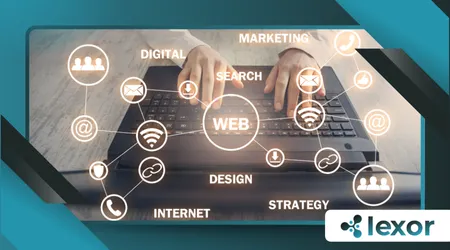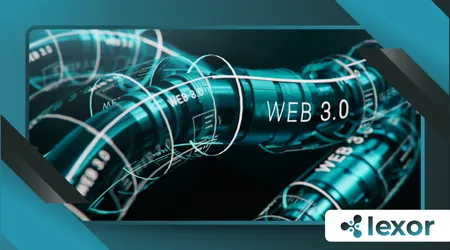Web3 Explained: The Future of Internet Technology
Web3 Explained: the internet has undergone significant transformations since its inception, evolving from static web pages to dynamic, interactive platforms.
Now, we stand on the brink of another revolutionary shift: the advent of Web3.
But what exactly is Web3, and why is it being hailed as the future of internet technology?
In this comprehensive guide, we will delve into the intricacies of Web3, exploring its core principles, potential applications, and the transformative impact it could have on our digital lives.
Understanding Web3: A Paradigm Shift in Internet Technology

The Evolution from Web1 to Web3
To fully grasp the concept of Web3, it’s essential to understand the evolution of the internet.
Web1, the first iteration, was characterized by static web pages and limited user interaction.
It was essentially a read-only platform where users could consume information but had little to no ability to contribute or interact.
Web2, the current version of the internet, introduced dynamic content, social media, and user-generated content.
This era saw the rise of platforms like Facebook, YouTube, and Twitter, where users could not only consume but also create and share content.
However, Web2 has its drawbacks, including issues of data privacy, centralized control, and monopolistic practices by tech giants.
Enter Web3, the next evolution of the internet. Unlike its predecessors, Web3 is built on the principles of decentralization, transparency, and user sovereignty.
It leverages blockchain technology to create a more open and equitable digital ecosystem where users have greater control over their data and online interactions.
Table 1: Comparison of Web1, Web2, and Web3
| Feature | Web1 | Web2 | Web3 |
|---|---|---|---|
| User Role | Consumer | Creator | Owner |
| Content | Static | Dynamic | Decentralized |
| Control | Centralized | Centralized | Decentralized |
| Data Ownership | Corporate | Corporate | User |
| Interactivity | Limited | High | High |
| Technology | HTML | AJAX, JavaScript | Blockchain, Smart Contracts |
Core Principles of Web3
Web3 is underpinned by several core principles that distinguish it from previous iterations of the internet.
First and foremost is decentralization. In a Web3 world, data is not stored on centralized servers controlled by a single entity.
Instead, it is distributed across a network of nodes, ensuring that no single party has complete control over the information.
Another key principle is transparency. Blockchain technology, the backbone of Web3, provides a transparent and immutable ledger of all transactions.
This means that every action taken on the network is recorded and can be verified by anyone, fostering trust and accountability.
Finally, Web3 emphasizes user sovereignty. In this new paradigm, users have full ownership and control over their data.
They can choose how their information is used, who has access to it, and even monetize it if they wish.
This shift from corporate-controlled data to user-controlled data is one of the most significant aspects of Web3.
++ Cryptocurrency Security: Protecting Your Digital Assets in an Evolving Digital Landscape
The Role of Blockchain in Web3
Blockchain technology is the cornerstone of Web3, providing the infrastructure needed to achieve decentralization, transparency, and user sovereignty.
At its core, a blockchain is a distributed ledger that records transactions across a network of computers.
Each transaction is grouped into a block, which is then linked to the previous block, forming a chain.
One of the most significant advantages of blockchain technology is its ability to create trustless systems.
In a trustless system, parties can interact and transact with each other without the need for a trusted intermediary.
This is achieved through cryptographic algorithms and consensus mechanisms that ensure the integrity and security of the network.
Smart contracts, another critical component of blockchain technology, play a vital role in Web3.
These self-executing contracts with the terms of the agreement directly written into code enable automated and trustless transactions.
They can be used for a wide range of applications, from financial services to supply chain management, further enhancing the capabilities of Web3.
Potential Applications of Web3

Decentralized Finance (DeFi)
One of the most promising applications of Web3 is in the realm of decentralized finance, or DeFi.
DeFi refers to a new financial system built on blockchain technology that operates without traditional intermediaries like banks or brokers.
Instead, financial transactions are facilitated by smart contracts, which automate processes such as lending, borrowing, and trading.
DeFi offers several advantages over traditional finance.
First, it is more inclusive, providing access to financial services for individuals who are unbanked or underbanked.
Second, it is more transparent, as all transactions are recorded on a public blockchain. Finally, it is more efficient, reducing the need for intermediaries and lowering transaction costs.
However, DeFi is not without its challenges.
The lack of regulation and oversight in the DeFi space has led to issues such as fraud, hacking, and market manipulation.
As the industry matures, it will be crucial to address these challenges to ensure the long-term viability of DeFi.
Decentralized Autonomous Organizations (DAOs)
Another exciting application of Web3 is the concept of decentralized autonomous organizations, or DAOs.
A DAO is an organization that is run by smart contracts rather than a centralized leadership team.
Members of a DAO can vote on proposals and make decisions collectively, with the rules and governance structure encoded in the smart contracts.
DAOs have the potential to revolutionize the way organizations are structured and operated.
They offer a more democratic and transparent alternative to traditional corporate structures, where decision-making power is often concentrated in the hands of a few individuals.
However, DAOs also face challenges, particularly in terms of governance and decision-making.
Ensuring that all members have a voice and that decisions are made in the best interest of the organization can be complex.
Additionally, the legal status of DAOs is still unclear in many jurisdictions, which could pose regulatory challenges.
++ Smart Contracts: A Comprehensive Guide for Beginners
Digital Identity and Data Ownership
In the Web3 era, digital identity and data ownership take on a new level of importance.
With the rise of data breaches and privacy concerns, there is a growing demand for solutions that give individuals greater control over their personal information.
Web3 addresses this need through the use of decentralized identity systems.
These systems allow individuals to create and manage their digital identities without relying on centralized authorities.
Users can control who has access to their data and how it is used, reducing the risk of data breaches and identity theft.
Moreover, Web3 enables new models of data ownership and monetization.
In a Web3 world, individuals can choose to share their data with companies and receive compensation in return.
This shift from data exploitation to data empowerment has the potential to create a more equitable digital economy.
The Transformative Impact of Web3
Empowering Individuals and Communities
One of the most significant impacts of Web3 is its potential to empower individuals and communities.
By giving users greater control over their data and online interactions, Web3 shifts the balance of power from centralized entities to individuals.
This empowerment extends to communities as well. Web3 enables the creation of decentralized networks and platforms that are owned and governed by their users.
This can lead to more equitable and inclusive digital ecosystems, where the value generated by the network is distributed among its participants rather than concentrated in the hands of a few.
Redefining the Digital Economy
Web3 has the potential to redefine the digital economy by introducing new models of value creation and exchange.
In a Web3 world, value is not just created by corporations but also by individuals and communities.
This is made possible through the use of cryptocurrencies, tokens, and other digital assets that can be earned, traded, and used within decentralized networks.
Moreover, Web3 enables new forms of collaboration and innovation.
Decentralized platforms and open-source projects allow individuals and organizations to collaborate on a global scale, creating new opportunities for innovation and value creation.
Challenges and Considerations
While the potential of Web3 is immense, it is not without its challenges.
One of the primary concerns is the scalability of blockchain technology.
As the number of users and transactions on a blockchain network grows, so does the demand for computational resources.
This can lead to issues such as network congestion and high transaction fees, which could hinder the widespread adoption of Web3.
Another challenge is the regulatory landscape.
The decentralized nature of Web3 poses unique challenges for regulators, who must balance the need for consumer protection with the desire to foster innovation.
As Web3 continues to evolve, it will be crucial to develop regulatory frameworks that support its growth while addressing potential risks.
Finally, there is the issue of user adoption.
For Web3 to reach its full potential, it must be accessible and user-friendly.
This requires the development of intuitive interfaces and tools that make it easy for individuals to interact with decentralized networks and applications.
Conclusion: The Future of Internet Technology
Web3 represents a paradigm shift in internet technology, offering a more decentralized, transparent, and user-centric digital ecosystem.
By leveraging blockchain technology, Web3 has the potential to transform industries, empower individuals, and redefine the digital economy.
However, the journey to a fully realized Web3 is not without its challenges. Scalability, regulation, and user adoption are just a few of the hurdles that must be overcome.
As we navigate these challenges, it is essential to remain focused on the core principles of Web3: decentralization, transparency, and user sovereignty.
In the end, the future of internet technology lies in our ability to harness the potential of Web3 while addressing its challenges.
By doing so, we can create a digital world that is more equitable, inclusive, and empowering for all.
Table 2: Potential Applications of Web3
| Application | Description | Benefits |
|---|---|---|
| Decentralized Finance (DeFi) | Financial system built on blockchain technology without intermediaries | Inclusive, transparent, efficient |
| Decentralized Autonomous Organizations (DAOs) | Organizations run by smart contracts with collective decision-making | Democratic, transparent, innovative |
| Digital Identity and Data Ownership | Decentralized identity systems giving users control over their data | Enhanced privacy, data ownership, monetization opportunities |
Table 3: Challenges and Considerations for Web3
| Challenge | Description | Considerations |
|---|---|---|
| Scalability | Increasing demand for computational resources as the network grows | Need for scalable blockchain solutions |
| Regulation | Balancing consumer protection with innovation in a decentralized landscape | Development of supportive regulatory frameworks |
| User Adoption | Ensuring Web3 is accessible and user-friendly | Creation of intuitive interfaces and tools |
In conclusion, Web3 explained is not just a technological evolution; it is a cultural and economic shift that has the potential to redefine our digital lives.
++ Smart Home Essentials: Complete Setup Guide 2025
By understanding its principles, applications, and challenges, we can better prepare for the future of internet technology and embrace the opportunities it presents.
